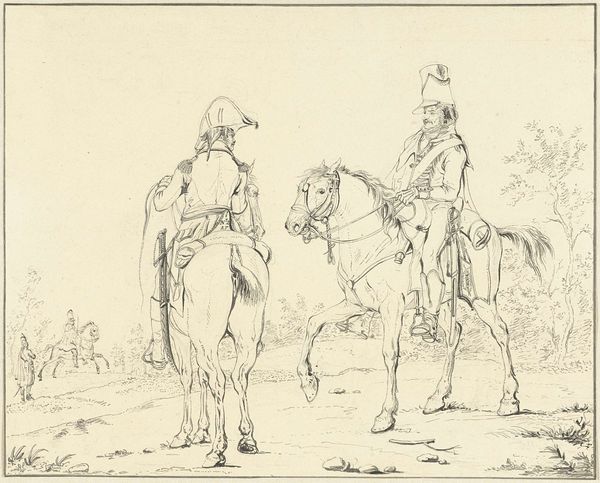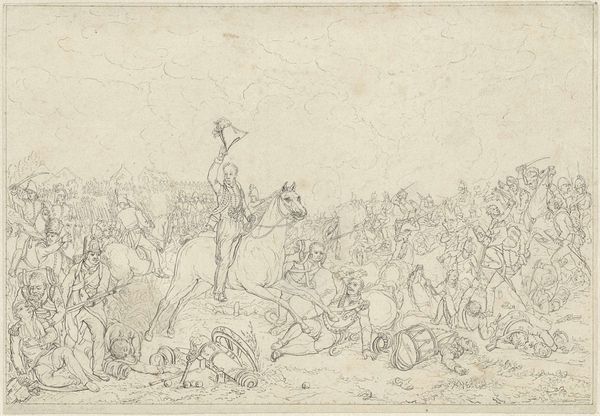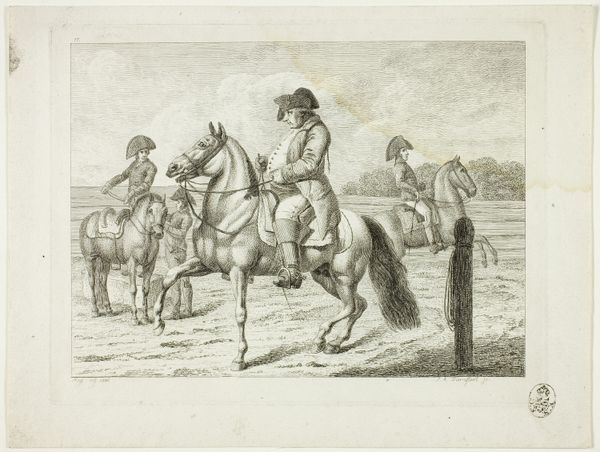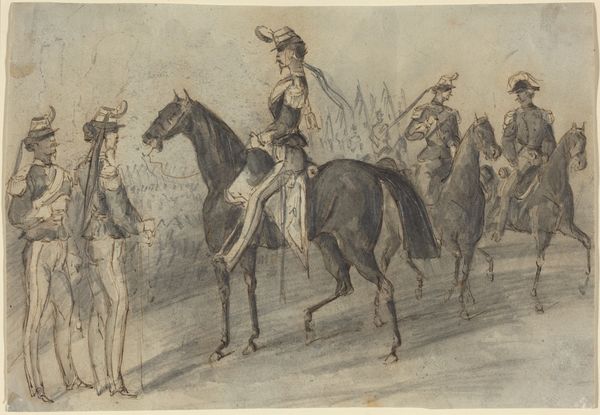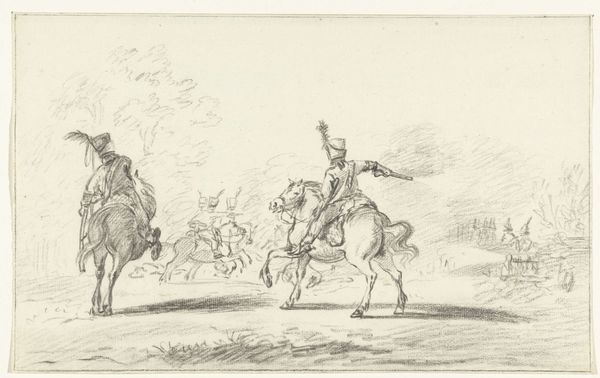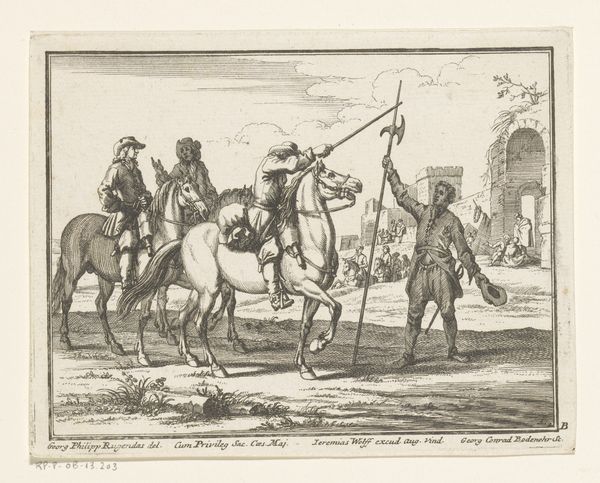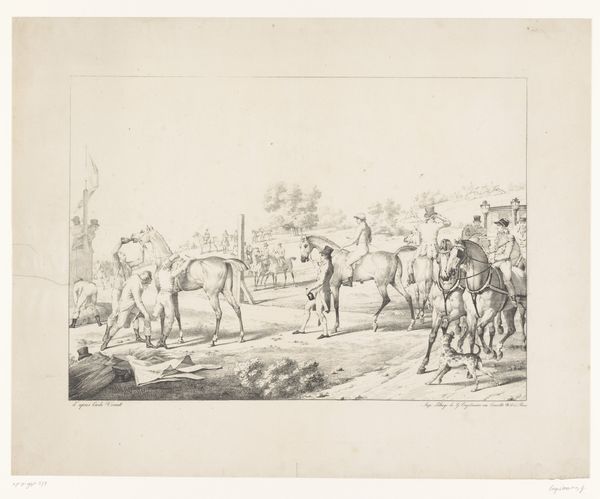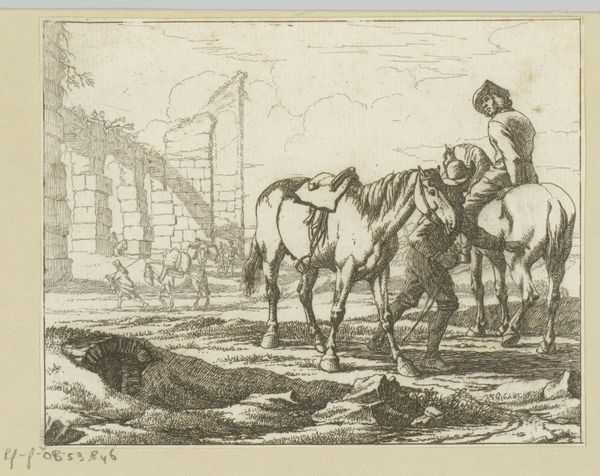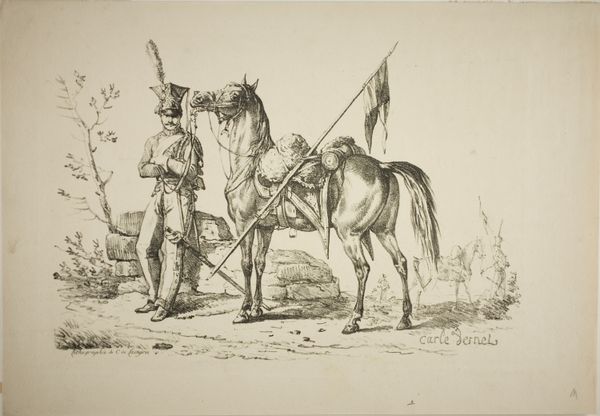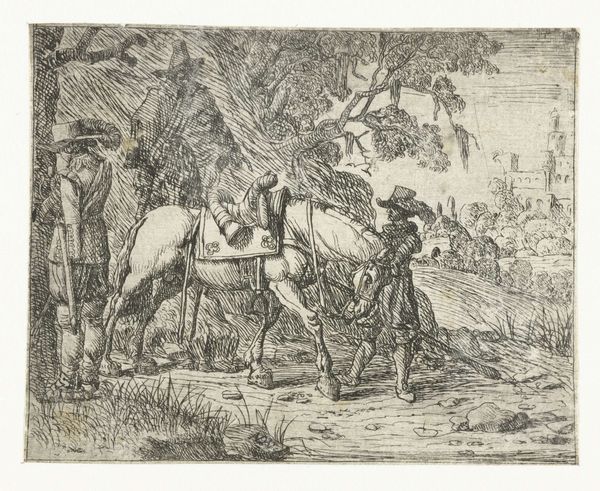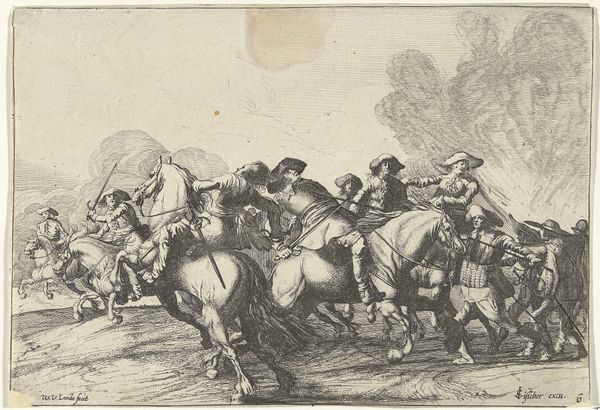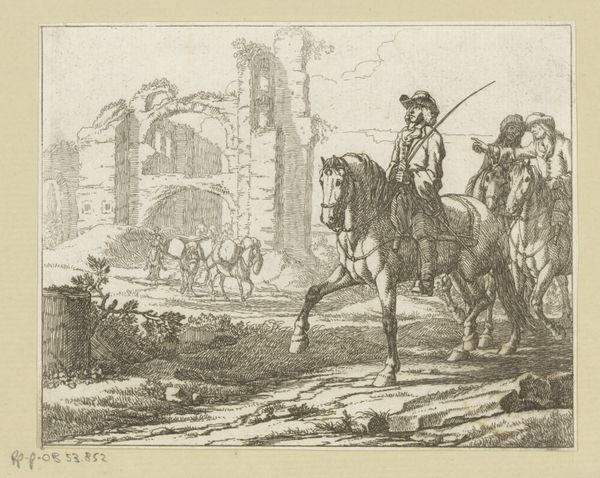
drawing, pencil
#
drawing
#
pencil sketch
#
figuration
#
personal sketchbook
#
romanticism
#
pencil
#
sketchbook drawing
#
genre-painting
#
history-painting
#
realism
Dimensions: height 139 mm, width 206 mm
Copyright: Rijks Museum: Open Domain
Curator: Looking at this, I immediately sense a quiet anticipation, a lull before some historical storm, perhaps. It's executed only in pencil but I see the gray tones implying immense conflict. Editor: This is titled "Historisch tafereel met krijgslieden," which translates to "Historical scene with warriors." Jan Karel Jacob de Jonge created it around 1848. A seemingly straightforward genre scene rendered as a pencil sketch. Curator: "Genre scene" feels a bit limiting, doesn't it? Given its timing, it might engage with burgeoning nationalist sentiments of the period, possibly romanticizing warfare—however subtly. The central figure on horseback seems to be a person of high importance and power over other figures around him, as denoted through gaze and attire. Editor: While acknowledging a reading related to nascent nationalism isn't incorrect, framing the work within the artist's broader career offers some insights. De Jonge was very invested in the historical documentation through visual work and often reproduced art within Dutch museums to catalogue pieces and improve general knowledge of the visual arts. This interest bleeds into his own artistic style here as well. Curator: An intellectual exercise, then? Cataloguing conflict instead of critiquing power dynamics makes for quite a read of his composition. The cannon is almost comically placed, adding to that academic feel as well. And yet, I return to my initial impression, there are more things lurking than De Jonge could likely ever catalog in this composition: ideas about gendered expectations of warfare, for one, the erasure of individual experience through grand narratives. It would be naive to state those are not there because they have weight outside De Jonges' original vision. Editor: Precisely. He provides us with visual source material, which through cultural studies we can understand his work's implications as both an artistic choice but also an interpretation of his socio-historical world. Curator: Ultimately, the artist prompts important contemporary questions regarding art's ability to influence and affect society at large. Editor: It highlights, too, the vital function of the museum as an arbiter and preserver of our complex visual legacy.
Comments
No comments
Be the first to comment and join the conversation on the ultimate creative platform.
